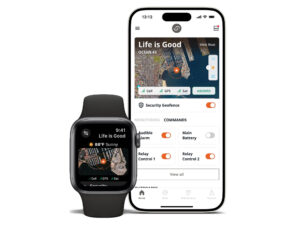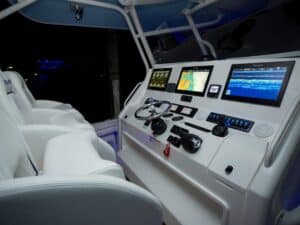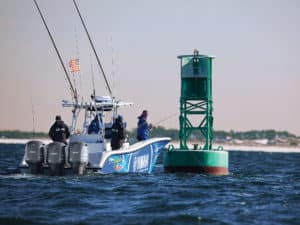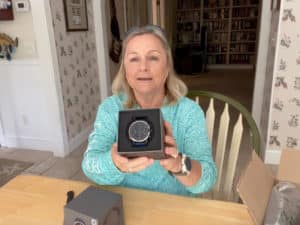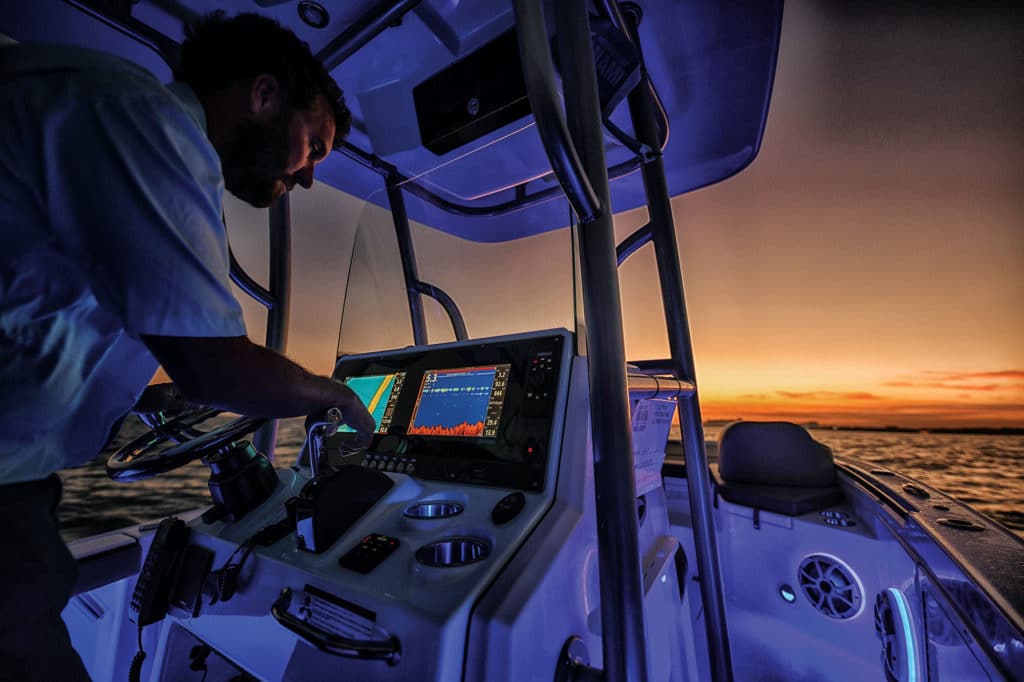
When I first heard the term “multifunction display” a good many years ago, I easily surmised the meaning: This is an electronics display that can show me sonar and radar returns and charts. I get it. Today, the meaning of “multifunction” has undergone massive magnification. MFDs still show charts and pull in sonar and radar, but they also offer captains everything from AIS and augmented reality to systems monitoring and engine data. These mega-machines are easier than ever to learn and program, and they’re faster than a freshly hooked wahoo.
Of course, not everyone easily embraces all this technology. “It kind of goes back to the analogy that MFDs are really similar to laptop computers. Their capabilities are virtually endless, but we use only a fraction of those capabilities,” says Jeff Kauzlaric, advertising and communications manager for Furuno, which introduced its first MFD in 1999. “Some people buy a souped-up laptop and run only Microsoft Office on it. In the same way, many people buy MFDs and use them only for a chart plotter and fish finder.”
Thankfully, manufacturers build products for those who prefer the basics. But anglers who choose to invest time and energy into unveiling the full functionality of their MFDs can find amazing tools to improve their fishing.
To gain more perspective on what makes MFDs so cool, I asked eight industry-sponsored captains and pros, who spend countless hours on the water with their electronics, to share what sparks their MFD love.
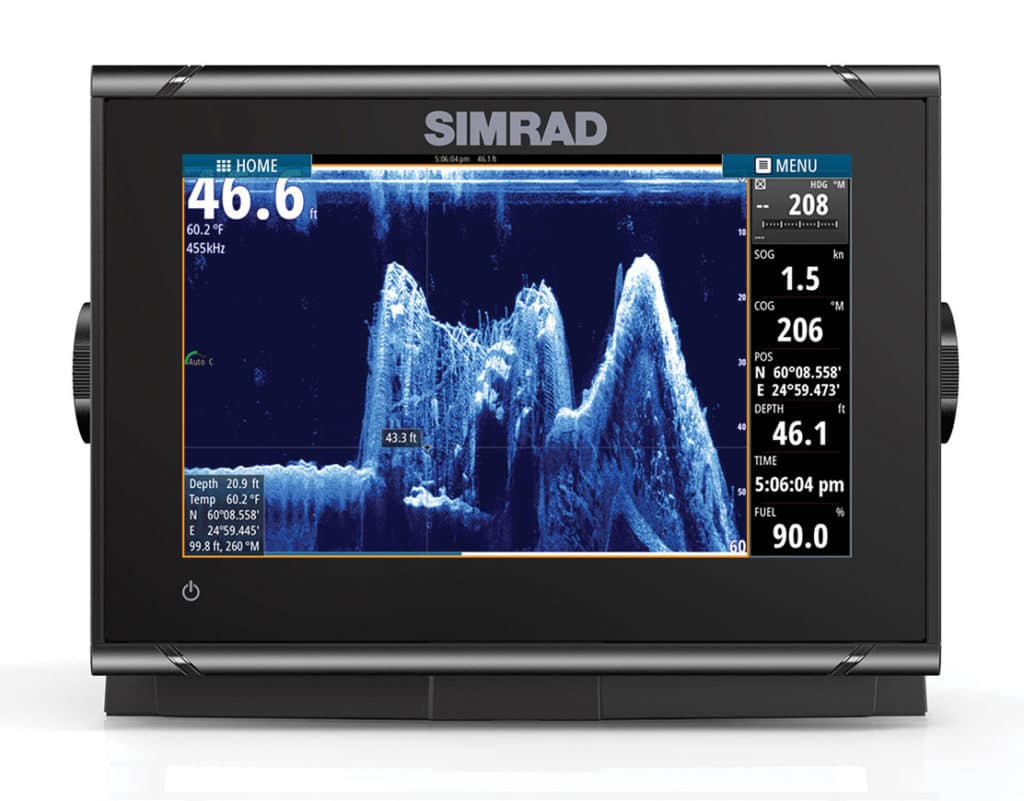
Simrad
Capt. Mark Henderson, tournament captain and charter-business owner out of Cape Carteret, North Carolina, runs a Sea Vee 390Z with two NSS evo3 16s, a 12-inch evo3 in the upper station, and a GO7.
Henderson uses his smaller GO7 unit to display engine data, positioning it in the center of the helm. He creates and saves a variety of split-screen scenarios on his 16s so he can switch functions depending on how he’s fishing or where he’s running.
He particularly appreciates the ease of switching palettes and brightness, whether he’s running during twilight or full sun. “With one little button touch, you can slide the brightness to dim the screen wherever you want it,” he says. “The brightness and the glare can be dangerous when you’re running at night, so the ability to control that is very important.”
Henderson says his son has become an expert in using the phantom Loran function on Simrad MFDs. “A lot of old-school guys talk in Loran TDs. There are great numbers out there that don’t need to be lost,” he says, describing the popular pre-GPS navigation technology. “The more you learn about converting those numbers, you’ll get more accurate. That’s a feature that really and truly is not utilized a lot.”
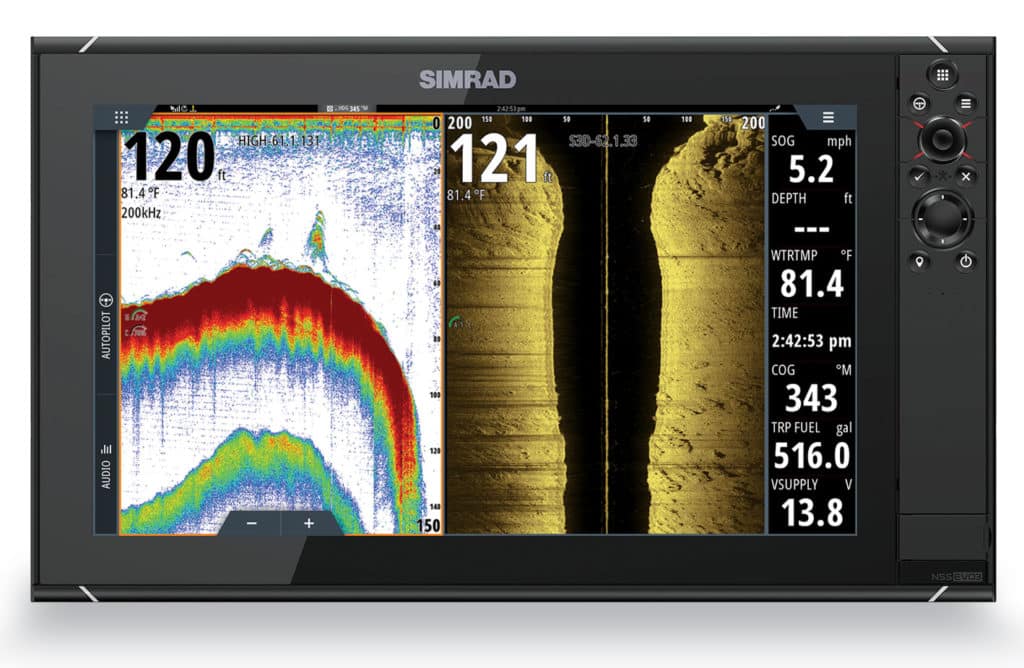
Capt. Robert Trosset III runs dive and spearfishing charters and recreationally fishes out of Key West, Florida, using two Freeman 34s, each with two NSS evo3 16s.
For Trosset, the high-definition returns provided by the S5100 chirp sonar module and his evo3 displays help him really pinpoint what he’s seeing. “I can differentiate snapper from amberjack [on-screen]. I can really tell now,” he says.
That definition, coupled with the bright clarity of the evo3’s IPS — or in-plane switching — screen technology, gives him exactly what he needs, whether he’s fishing or preparing to drop divers. IPS screens allow anglers to view their display from any angle, even through polarized sunglasses.
“IPS doesn’t get darker. It stays bright,” explains Stuart Wood, key account manager for Navico, Simrad’s parent company. “You know that annoying habit — when you’re in the cockpit, and you have to lift your sunglasses to look back at the fish finder on the dash? With IPS, you never have to do that.”
Trosset also appreciates that he can connect as many as three chirp transducers into his S5100 module; the evo3 display accommodates two. He can overlay DownScan imaging, now available with Active Imaging for super-high-detailed returns, on top of his plotter screen as well. “I like to call it ‘the interconnected boat,’” he says. “It all talks to each other.”
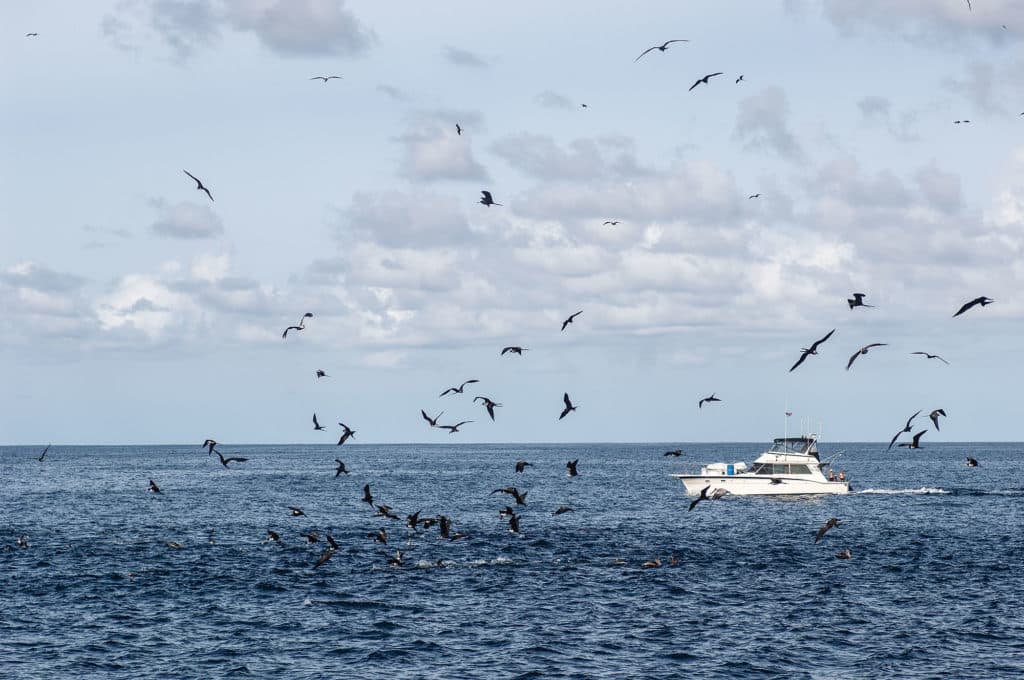
Garmin
Bill Platt, tournament captain and owner of Custom Marine Electronics near Galveston, Texas, runs a SeaHunter Tournament 39 with three GPSMap 7612s. He plans to switch out those for 8616s this spring.
Platt, who admits to age-related presbyopia (loss of near-focus), says a new Garmin software update for its MFDs has him most enthused: “The icons and waypoints can now be resized up or down on the screen. That’s the best thing in the world for me!”
Because Platt installs electronics on clients’ boats, he also appreciates the ActiveCaptain integration. Garmin introduced ActiveCaptain, a free all-in-one mobile app, in 2017 to give anglers access to the company’s cartography, automatic delivery of the latest available software, off-vessel planning capabilities, connected services and more. Thanks to the app, Platt can instruct clients how to update their MFD software using a smartphone and an AC account.
This avid tournament captain also saves his sounder settings by species or fishing style. When he heads out to bottomfish, for instance, he can launch his snapper sonar settings. If he targets swordfish in deep water, he can recall those settings instantly.
The 8616s will give him control over his Shadow-Caster undergunwale and underwater lighting. Garmin’s new BlueChart g3/Vision chart cards can show him high-definition contour lines and shaded-relief depth contours, which offer a clearer, more-defined picture of bottom structure.
“Everything you want to do, you can now do it from your Garmin,” he says. “It’s gotten so easy and cool. What’s it going to be like in 10 years?”
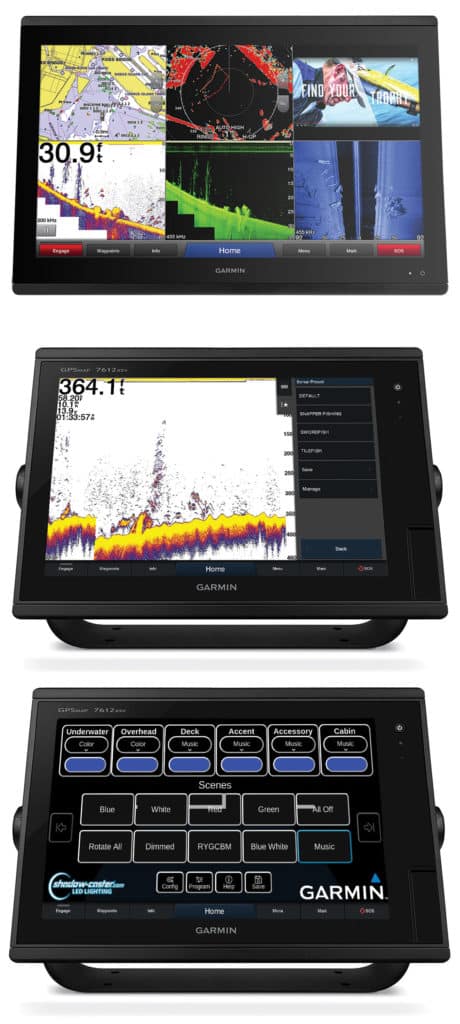
Capt. Ryan Farner, a professional private captain out of St. Petersburg, Florida, runs a Yellowfin 26 of his own with three Garmin 8600-series units, but he pilots numerous boats for clients, and all those vessels are equipped with updated Garmins.
Farner says, “The fact that I can tie everything in,” ranks highest on his list of MFD loves. Garmin 8600s can show a six-way split screen. “If I have five windows open, I can toggle back and forth. If I touch one box, I can expand it and then go back. I never lose my place.”
When he’s running a boat to escape a big storm, for instance, he might open radar in one window and AIS with a weather overlay in another. “When you’re running fast in a 40-foot center-console through inclement weather, you’ve got to pay attention to what you’re doing and change things on the fly,” he adds. “Garmin makes [the user interface] smart.”
When using chirp sonar, he rarely has to tweak settings. “The auto high and auto medium settings are really, really good. I like the auto settings on the radar side too. I don’t have to sit there spending time tweaking my machine so I can find birds. It really gives you a boost of confidence.”
On a larger Viking sport-fisher he runs, Farner says he routes satellite TV through the Garmins on the bridge.
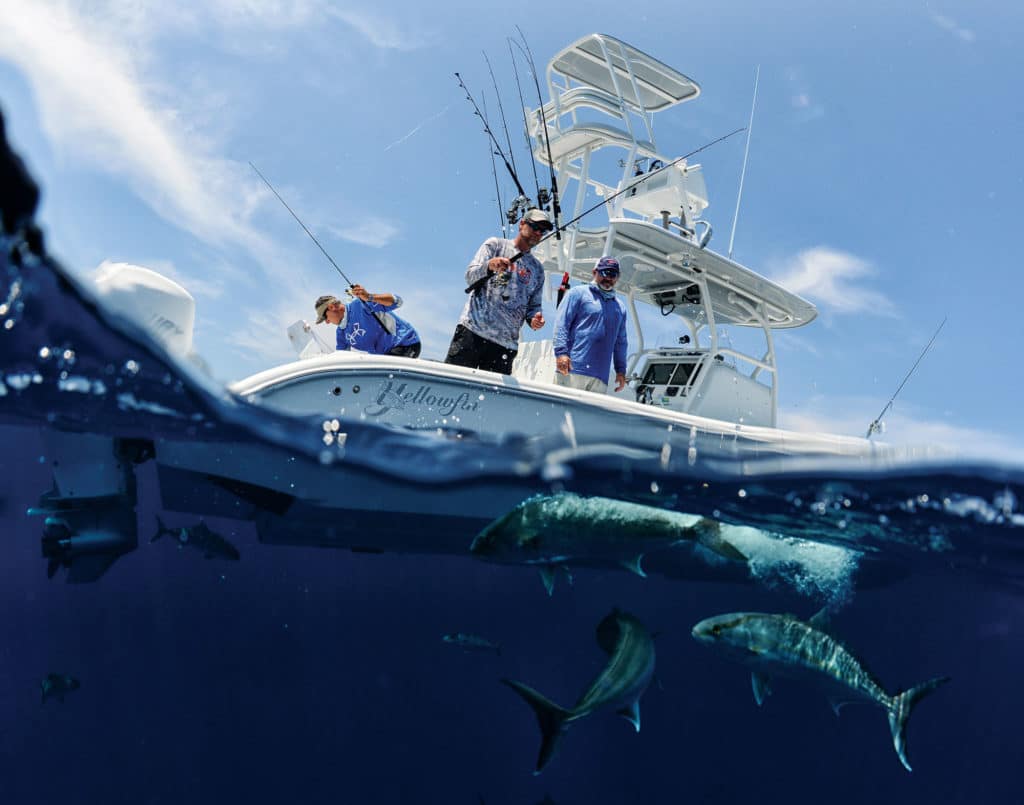
Raymarine
Dave Phillips runs industry trips for brand promotion through his business Teton Offshore Fishing out of Garibaldi, Oregon. He also fishes tuna commercially during summer. He runs a 28-foot Grady-White with two Axiom Pro 12s.
Phillips’ MFDs employ three transducers for RealVision 3D and low-high-wide chirp sonar. “I can run multiple channels of both 3D and low-band or high-band chirp at the same time. That’s probably No. 1 with me,” he says. “In the Pacific Northwest, we have plankton-rich waters that come off the shelf. I don’t know what kind of picture I’m going to get, so I run all three channels at once.”
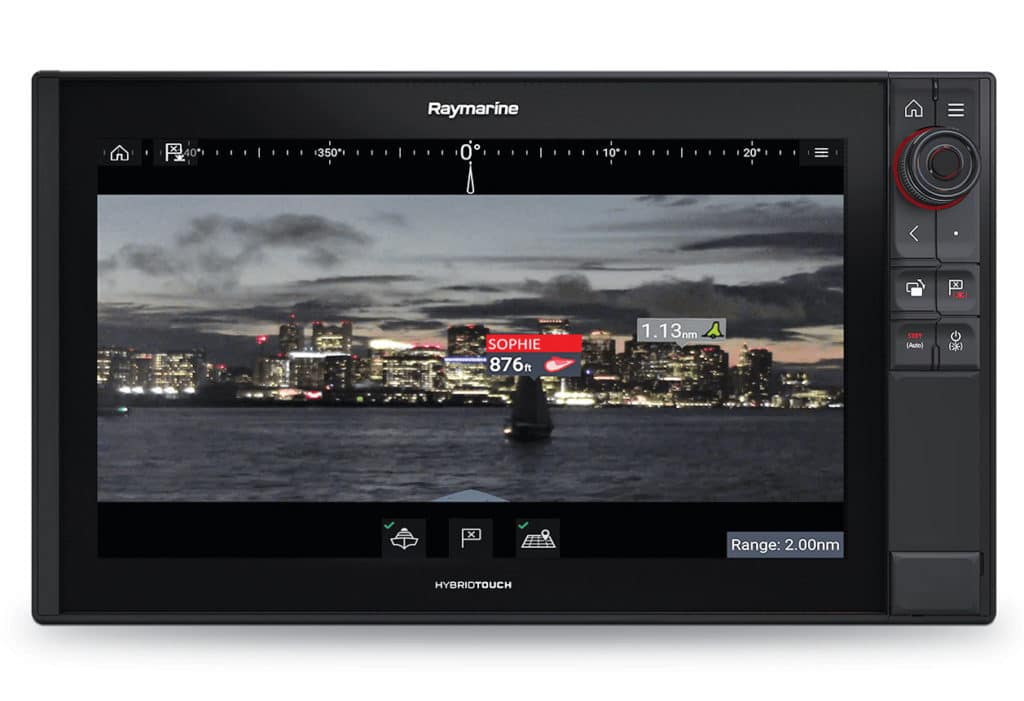
Because he often fishes 30 to 40 miles offshore, he sometimes runs home in the dark. On those evenings, he runs his FLIR M232 thermal camera with ClearCruise (augmented reality) on one display. On the second, he launches his plotter with overlaid radar and splits that screen to check the tide. “I’ve got to make sure I’m not crossing the bar too early or late,” Phillips says, noting Oregon’s dramatic inlet tide changes. “Five years ago, I would have looked at the phone for a tide chart.”
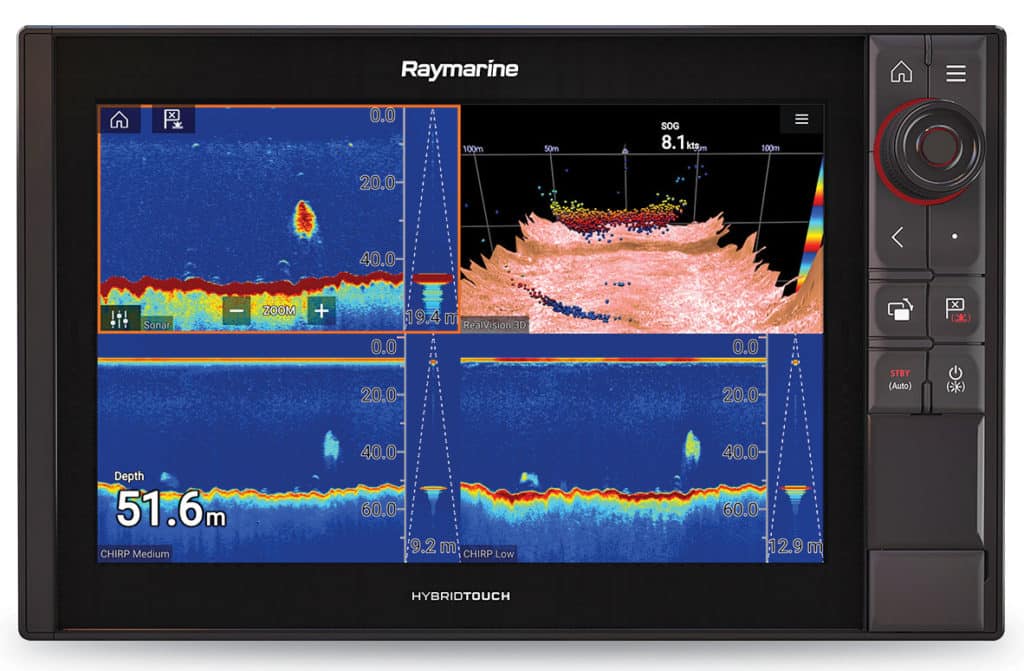
Phillips says he has also noticed a dramatic increase in processing speed during the past five years, combined with the ability to churn more data. In the end, “it’s all about safety. Because we’ve integrated all this data, we can be safer on the water.”
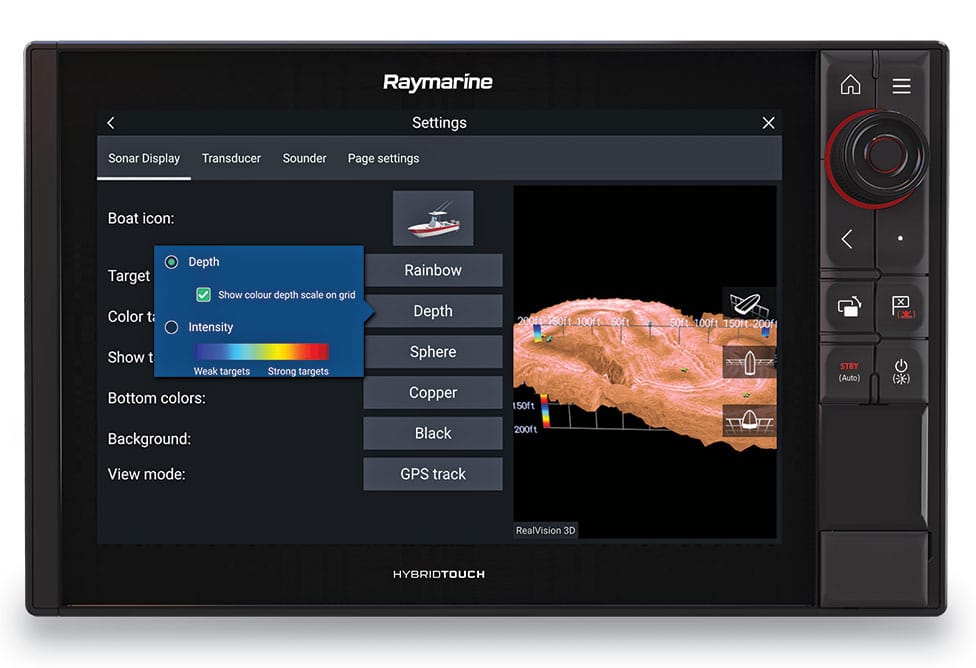
Ron Mitchell, tournament captain, runs a SeaHunter Tournament 39 with two gS165 glass displays and a gS95.
“I’ve been with Raymarine since it was Raytheon,” Mitchell remembers. “For me, it’s the ease of use that’s No. 1, and the second thing is target definition.”
Raymarine says it has put extra effort into its LightHouse software interface. “When we went from LightHouse 2 to 3, we went to great efforts to learn what features people were using most and brought those to the top,” says Jim McGowan, Raymarine marketing director. “We also wanted to prevent users from having to go deep into a multitier menu to find settings. Most things are only one touch away; the rest are only two touches.”
Raymarine’s Live View menus allow captains to still see the live application during adjustments. “As you make menu selections, they happen right there on the preview window,” McGowan adds. “You never have to exit the menu to see the results of your selections.”
Mitchell says he uses his smaller gS unit mainly to monitor engine data, unless he’s running at night, when he’ll use it to see his plotter, with FLIR thermal imaging on another screen and radar on the third.
While his displays can split their picture into four windows each, he often uses his two 16-inch units for one massive window each for charting and sonar.
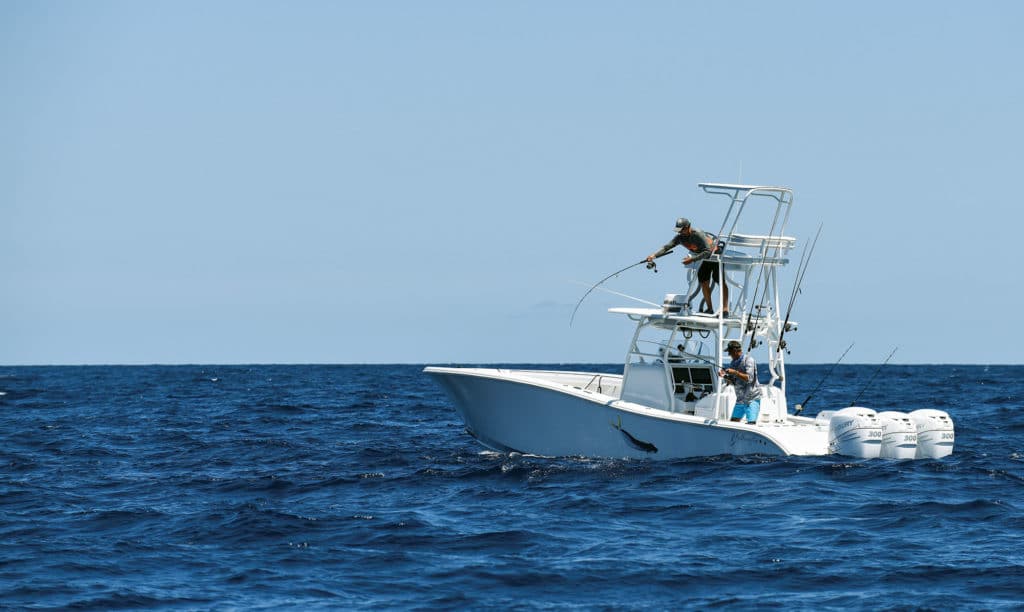
Furuno
Michael Padgett, owner of Best Marine Products in Miami, builds sea chests and high-speed pickups for livewells. He runs a Sea Vee 34Z with two NavNet TZtouch2 15s.
What tops his list of best MFD features? Edge-swipe capability. Place your finger at the left or right side or at the top or bottom of the display screen, and pull across, down or up to reveal various menus.
“Edge swiping enables you to get into so many functions easier and more intuitively than many other machines,” Padgett says. “Now it’s like using a big iPad.”
Padgett also likes the fact that he can open as many as three windows on each display screen, depending upon how he’s fishing. “A lot of times, I’m drifting out front and live-baiting. Usually, I have a map up to see where I’m at, see where the drift is going, and track the speed of the drift,” he says. “On the other screen, most likely I’m showing my bottom machine with 3D [DFF3D] and chirp simultaneously. That gives me a real-time rendering of what’s going on with the relationship of the boat and the bottom. It looks like a computer simulation.”
When he’s trolling, he brings up the chart and overlays Sirius XM weather to look at sea-surface temperature breaks. He’ll also bring up chirp sonar and radar so he can keep an eye out for bait and birds.
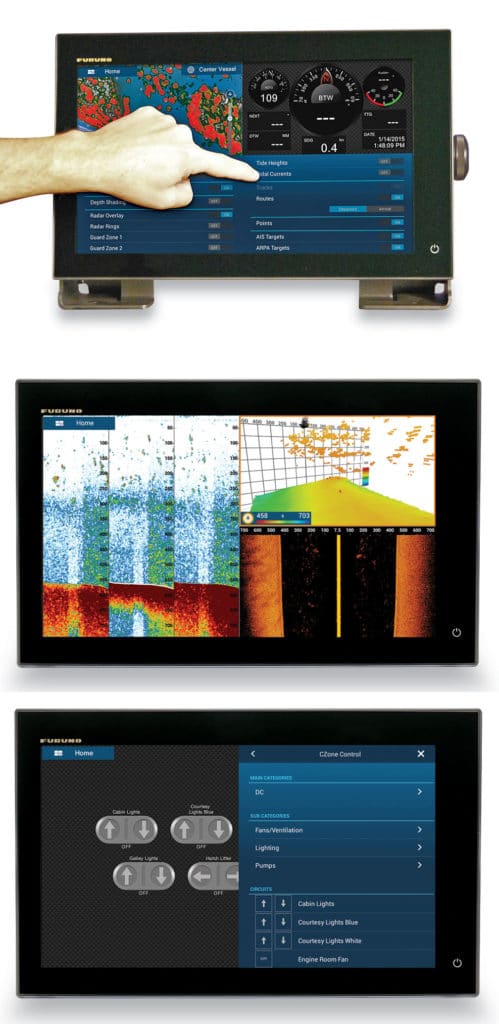
Matt Rowland, tournament captain from Ilwaco, Washington, runs a Sea Vee 390 with two NavNet 3D 12s but is upgrading to TZtouch2 15s.
Rowland looks forward to his new TZtouch2 systems for several reasons. First, he says, is ease of use. “There’s no learning curve because it’s so easy. It’s just the way everything processes,” he says.
He’ll also be glad to see engine functions through the MFD rather than having to scroll through pages on a smaller gauge. He plans to add a C-Zone digital-switching system for monitoring all his boat’s pumps, lights and alarms through his MFDs.
Read Next: Top Electronics Technology for Your Midsize to Large Center Console
With the free NavCenter Weather option on TZt2, he can create a hot spot using his cellphone, and bring up current wind speed and direction, which he can compare with Sirius XM weather.
And finally, he’ll be installing Furuno’s DFF3D 3D multibeam sonar module. “I think that’s going to be a game-changer for us,” he says. “Being able to see side to side and front to back will be pretty huge for us. With a lot of our fishing now, we troll to find the fish, then shut down the boat and switch to live bait or vertical jigging.”
New Era
While all of these pros run large offshore-fishing vessels, the technology doesn’t stop at the tide line. Smaller units for bay boats provide just as much processing speed and capability, although they usually don’t need to network as many peripherals.
If you haven’t upgraded your electronics in the past decade, perhaps it’s time to experience some new technology, even if you’re a one-screen wonder. Maybe you’ll feel some of that MFD love too.

